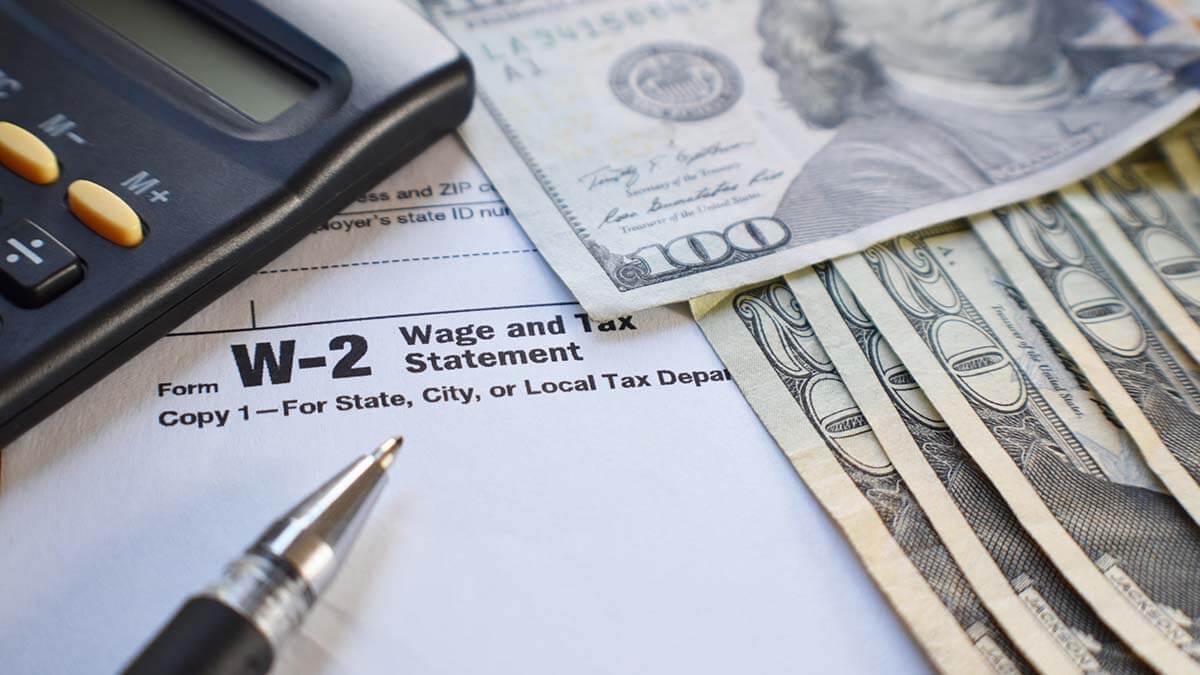Each and every employer is responsible for completing, distributing, and filing Form W-2 each year. But, what happens if filing Form W-2 slips your mind? Learn about what happens when you forget to file Form W-2 and the failure to file W-2 penalty.
Failure to file W-2 penalty for businesses
As an employer, you must complete and send Form W-2 to your employees by January 31 every year. You’re also responsible for sending Forms W-2 and W-3 to the Social Security Administration (SSA) by January 31 to avoid penalties. If January 31 falls on a holiday or weekend, the deadline is the following business day.
Employers can either send in Forms W-2 by mail or e-File them with the SSA online by the due date. If you have 250 or more Forms W-2, you must electronically file the form.
Miss the January 31 deadline? That’s when the W-2 late filing penalty might come into play…
What is the penalty for not filing W-2?
So, what kind of late W-2 penalty will you potentially be subject to if you don’t file on time?
If you fail to meet the January 31 deadline but file the form within 30 days of the due date, the IRS can assess a penalty of $50 per Form W-2. If you file after 30 days but before August 1, the fine is $110 per form. If you don’t file by August 1, the fine increases to $270 per W-2.
Maximum penalties can vary depending on how late you submit the forms. And, they can vary depending on if you’re considered a small business. A small business has a smaller late filing W-2 maximum penalty amount. You are a small business if you have gross receipts of $5 million or less.
Keep in mind that penalty amounts and maximum penalties can change from year to year.
| Number of Days Late | Minimum Penalty | Maximum Penalty |
|---|---|---|
| 30 days or less | $50 per form | $556,500 per year ($194,500 for small businesses) |
| After 30 days and before August 1 | $110 per form | $1,669,500 per year ($556,500 for small businesses) |
| After August 1 | $270 per form | $3,339,000 per year (1,113,000 for small businesses) |
Although some penalties are unavoidable after you make an error on or when filing Form W-2, there are some exceptions to the penalties, including:
- Inconsequential errors or omissions
- Reasonable cause
- If you can show that the failure was due to an event beyond your control or for significant mitigating factors
Let the IRS know if you have reasonable cause for not filing on time.
What are the other W-2 penalties?
Failure to file is not the only W-2-related penalty your business may be subject to if you make a mistake. Here are the other W-2 penalties to keep in mind:
- Filing with incorrect information
- Incorrect TIN or necessary information
- Incorrect filing method
- Filing by paper instead of e-Filing
- Filing forms that are not machine readable
- Failing to give required information
- Missing TIN or information
- Not sending W-2s to employees
- Fraudulent filing
Penalty amounts may vary depending on what W-2 form mistakes you’ve made. For example, a fraudulent filing can cost $5,000 or more.
Penalties for not filing with the state
Some states require employers to file a copy with the state. If you do not file a copy with the state and are required to, you may be subject to additional penalties.
Penalty rates vary from state to state. Generally, the penalty amount depends on when you file the return.
To find out if your state has any late filing penalties for Form W-2, consult your state directly.
How to avoid a penalty for late W-2
The failure to file Form W-2 penalty may seem intimidating. But if you know your deadlines and file on time, you can steer clear of pesky penalties.
Here are some ways to avoid W-2 penalties:
- Set deadline reminders
- Prepare Forms W-2 ahead of time
- File on time
- Provide all necessary information
- Know your correct filing method
- Use the correct paper forms (if paper filing)
- Double-check your entries on the form
- Review the form before submitting
- Send employees copies on time
The more you prepare in advance, the better off your business will be come tax time (and the less you will be scrambling in January).
To make filing W-2s a pain-free process, consider using payroll software. Typically, your payroll provider can generate forms for you to file. Or if you use full-service payroll software, the payroll company takes care of the W-2 and W-3 filings for you.
This is not intended as legal advice; for more information, please click here.




